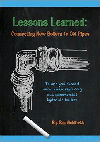Analyst: Bright Outlook For PVF

Michael Halloran of Robert W. Baird
& Co. Photo by Pat Lenius.
Industrial trends have tended to outperform consumer related trends and more people expect industrial to drive us out of the recession, according to, CFA, senior industrial analyst, Robert W. Baird & Co. He spoke at an ASA educational session, “Thrive in the PVF Industry: An Analysis of End-User Markets for Industrial PVF Segments” at NetworkASA: THRIVE in Chicago Oct. 13.
He noted that industrial production is a lagging indicator, but a good indication of where things have been.
Halloran said his firm projects accelerating growth through 2011 but it will be single-digit growth. No secondary recession or double dip is anticipated, he added.
Residential construction will gradually head upward off the bottom. Healthy growth in housing starts, closer to 1.2 million or higher, is not expected until 2014 or beyond.
Non-residential construction has performed a little better than projected, Halloran said. The length of a typical non-residential recession is four to five quarters. This recession has lasted about eight quarters and may remain down another two to four quarters.
Oil and gas are in the early stages of recovery. Core maintenance and repair has picked up. Large project activity is still pretty stagnant, he said. Chemical processing is very cyclical and struggling to right size. Like oil and gas, it will do better longer term vs. short term and international will be stronger than domestic.
Although there is great uncertainty about 2011, people are generally expecting growth.
On the inventory side, distributors seem less willing to push capital into the market and have been able to manage business on leaner inventory levels.
Manufacturing activity has reached a sustainable rate and stocks are performing better than expected, he said.
Here are some highlights from his presentation:
- The U.S. recession ended in June 2009.
- U.S.
industrial production growth turned positive year-over-year in March, accelerated
through May.
- U.S.
industrial production troughed at -13.3% in June 2009 vs. -5.7% in November
2001.
- U.S.
industrial production grew 5.8% in the second quarter.
- Expect decelerating growth throughout the second half of 2010.
- Global industrial production growth turned positive in January, accelerated
through May.
- Global industrial production troughed at -18.2% in March 2009 vs.
-6.2% in Nov 2001.
- Global industrial production exceeded 10% in the second quarter but
growth is decelerating.
- The Institute for Supply Management Purchasing Managers Index has
been above 50 for the past year.
- Banks are
loosening lending standards.
- A steep yield curve is a jump-start for the next cycle.
- U.S. industrial production is the lagging indicator and
confirmation the cyclical recovery is underway.
- Oil/gas
and general industrial are on a positive trajectory; power, municipal
warter/wastewater and chemical are neutral; and both commercial and residential
construction are still weak.
- Housing starts of 598,000 were up 25% from the April 2009 trough,
but down 74% from peak.
- The consensus forecast calls for significant growth year-over-year
in 2011/2012, but on a low base.
- A healthy level of activity is 1.2 to 1.5 million starts, but it
will be years before that happens - 2013 or beyond.
- The inventory of unsold homes must come down further before new construction
can take off.
- In terms of residential remodeling, renovation spending fell sharply
in the downturn, but likely has bottomed - growth is expected to resume in
2011.
- ABI Index, a leading indicator for non-residential construction
activity, remains below 50 but is gradually improving and there are signals
that a bottom in activity is close
- Year-over-year growth in non-residential construction is unlikely
until the second half of 2011.
- Private non-residential construction spending is nearing a bottom, though still down 24% year-over-year in August.
For more information on Robert W. Baird & Co., visit www.rwbaird.com.
(Text and photo by Pat Lenius)
Links
Looking for a reprint of this article?
From high-res PDFs to custom plaques, order your copy today!






